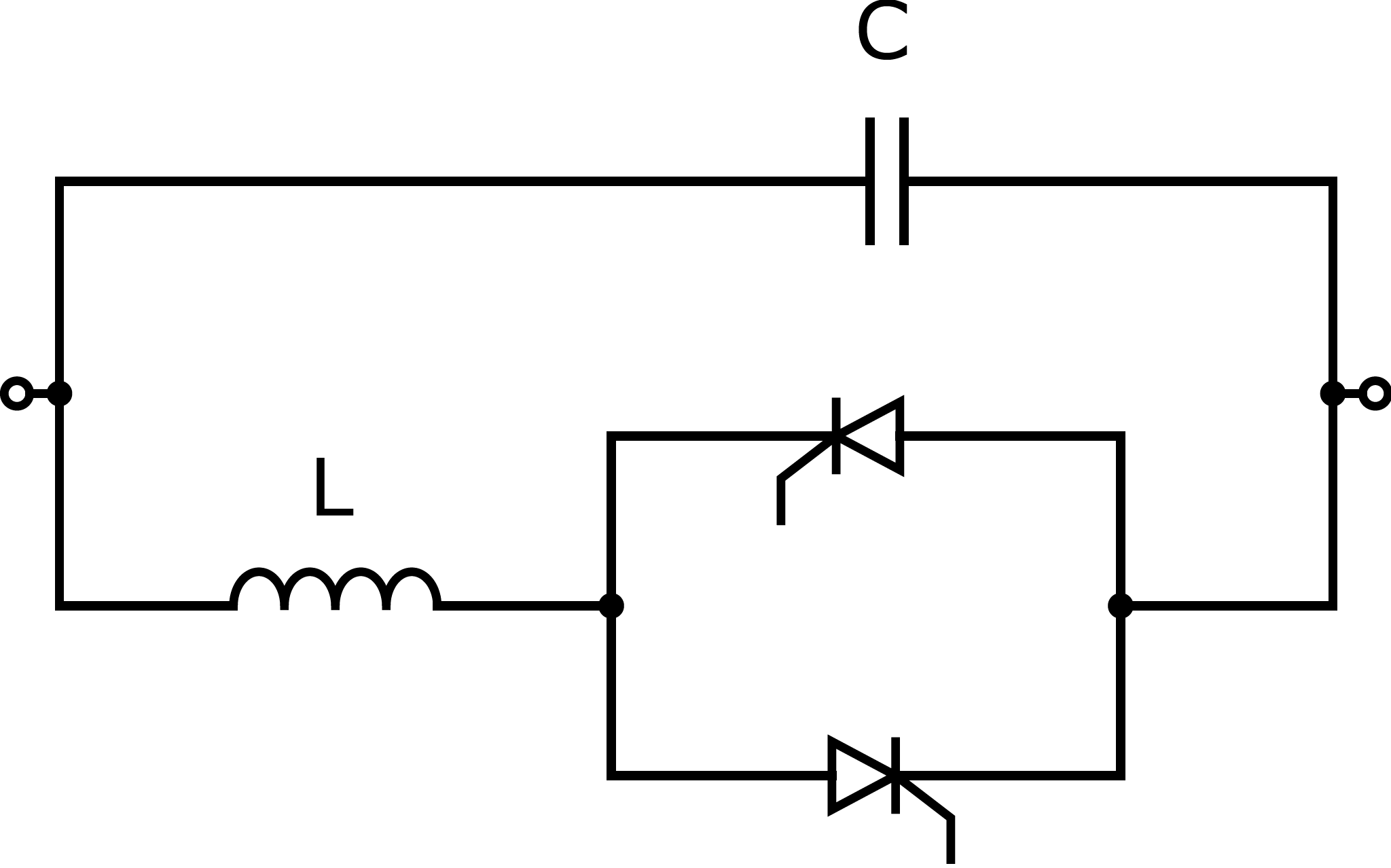Thyristor-Controlled Series Capacitor (TCSC)
We implement the FACTS devices based on the following source:
A. Panosyan, “Modeling of advanced power transmission system controllers”, Ph.D. dissertation, Gottfried Wilhelm Leibniz Universität Hannover, 2010.
Thyristor-Controlled Series Capacitor (TCSC) device is a series element that controles the power flowing through its path by regulating its impedance. The TCSC device is very similar to the Static Var Compensator (SVC) - in fact, it is its series counterpart. Indeed, a TCSC device consists of a parallel circuit of a fixed capacitor and a reactor controlled by a pair of antiparallel thyristors. In contrast to SVC, a TCSC device is connected in series in the power system. For more context, be advised to read the documentation for the SVC elements:
See also
See also
We demonstrate the use-case of this device in the pandapower tutorial: FACTS.
Create Function
Input Parameters
net.tcsc
Parameter |
Datatype |
Value Range |
Explanation |
name |
string |
name of the TCSC |
|
from_bus* |
integer |
index of the from bus where the TCSC is connected |
|
to_bus* |
integer |
index of the to bus where the TCSC is connected |
|
x_l_ohm* |
float |
\(\geq\) 0 |
impedance of the reactor component of TCSC |
x_cvar_ohm* |
float |
\(\leq\) 0 |
impedance of the fixed capacitor component of TCSC |
set_p_to_mw* |
float |
set-point for the power flowing through the TCSC element at the to bus |
|
thyristor_firing_angle_degree* |
float |
:math:90 leq 180 |
the value of thyristor firing angle of TCSC |
controllable* |
boolean |
True / False |
whether the element is considered as actively controlling or as a fixed series impedance |
in_service* |
boolean |
True / False |
specifies if the TCSC is in service. |
min_angle_degree |
float |
\(\geq\) 90 |
minimum value of the thyristor_firing_angle_degree |
max_angle_degree |
float |
\(\leq\) 180 |
maximum value of the thyristor_firing_angle_degree |
*necessary for executing a power flow calculation.
Electric Model

The series impedance \(X_{TCSC}\) of the TCSC element is calculated equivalently to SVC, according to the following equation:
The term \(X_L\) stands for the reactance of the reactor (x_l_ohm) and the term \(X_{Cvar}\) stands for the total capacitance (x_cvar_ohm). The thyristor firing angle \(\alpha\) is the state variable that on the one hand defines the impedance of the element, and at the same time is the result of the Newton-Raphson calculation. The admittance \(Y_{TCSC}\) equals \(-1j \frac{1}{X_{TCSC}}\).
The power flow through the TCSC element is described by the following equation:
Result Parameters
net.res_tcsc
Parameter |
Datatype |
Explanation |
thyristor_firing_angle_degree* |
float |
the resulting value of thyristor firing angle of svc [degree] |
x_ohm |
float |
resulting value of the shunt impedance of svc [Ohm] |
q_mvar |
float |
shunt reactive power consumption of svc [MVAr] |
vm_pu |
float |
voltage magnitude at svc bus [pu] |
va_degree |
float |
voltage angle at svc bus [degree] |